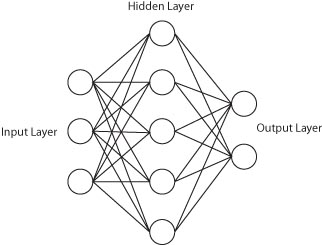A High Level Understanding of Backpropagation Learning
Backpropagation is a technique used to help a feedforward neural networks learn or improve the accuracy of it's output based on the expected output of the learning sample set. That is to say, we will have a set of sample inputs with their expected outputs and then use that set to make adjustments in for the weights of our neuron associations (again I like to call them axons). This approach effectively solves the problem of how to update hidden layers.The Math Basics for Backpropagation Learning

http://www.youtube.com/watch?v=nz3NYD73H6E&p=3EA65335EAC29EE8
- ri is the error for the nth node of the ith layer. Furthermore, r is only for the output layer; it is simply the difference between the expected output and the output (see Neuron.CalcDelta() in example download). vi is the values calculated during the normal feedforward algorithms (see part 1). Φ' will be explained in equation 4. δi is the calculated change for neuron n within the ith layer.
- Critical: This is much like equation 1 with some very distinct differences. You may notice that instead of using r, the error is calculated by the sum of the jth delta with the weighted association axons of the nth neuron with the jth layer.
- This equation is the gradient or calculated change of weights. Or in other words, this is where we make the learned changes. η is simply a learning rate between 0 and 1. y is the original input values calculated from the axon for the nth neuron during the feedforward calculation.
- This is the inverse or derivative activation function for either sigmoid or hyperbolic tangent functions (depends on whichever activation function was used for the neurons).
<< back to part 1
Download Sample






